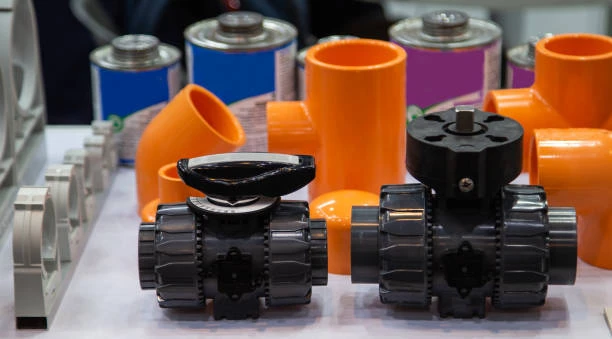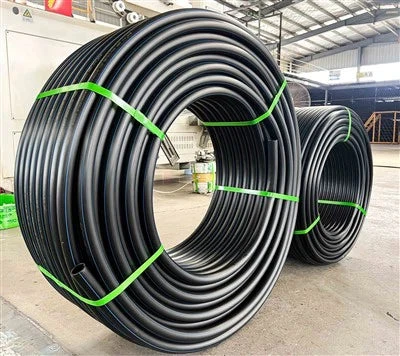Introduction
In recent years, Kenya has witnessed a surge in infrastructure development, particularly in road construction. As part of this growth, Megapipes, a leading provider of high-density polyethylene (HDPE) solutions, has deployed HDPE pipe culverts for various road projects across the country. This innovative approach not only enhances the durability and sustainability of road infrastructure but also addresses critical drainage needs. This article explores the significance of HDPE pipe in road construction, the advantages of using culverts, and the broader impact on Kenya’s infrastructure landscape.

Understanding HDPE Pipe
High-density polyethylene (HDPE) pipes are engineered from high-density polyethylene, known for their strength, flexibility, and resistance to environmental factors. These pipes are widely used in various applications, including water supply, sewage systems, and drainage, making them a popular choice for modern infrastructure projects.
Key Properties of HDPE Pipe
- Durability: HDPE pipes are resistant to corrosion, chemical exposure, and extreme weather conditions, ensuring a long service life.
- Lightweight: Their lightweight nature facilitates easier transportation and installation, reducing labor costs and time.
- Flexibility: HDPE pipes can withstand bending and pressure without breaking, making them ideal for varying terrains.
- Cost-Effectiveness: The longevity and minimal maintenance requirements of HDPE pipes lead to overall cost savings over time.
The Role of Culverts in Road Construction
Culverts are structures that allow water to flow under roadways, facilitating proper drainage and preventing water accumulation. The deployment of HDPE pipes culverts in road construction offers several benefits:
1. Improved Water Management
Effective drainage is crucial for maintaining the integrity of roadways. HDPE pipes culverts efficiently manage water flow, reducing the risk of flooding and erosion. This is especially important in regions like Kenya, where heavy rains can lead to significant infrastructure challenges.
2. Enhanced Road Longevity
By preventing water buildup and directing it away from the road surface, HDPE pipes culverts help prolong the lifespan of roads. This proactive approach minimizes damage caused by moisture infiltration, thus reducing the need for costly repairs.
3. Environmental Considerations
Using HDPE pipes for culverts aligns with sustainable practices. HDPE is recyclable, and its use in road construction supports eco-friendly initiatives. By reducing the environmental impact of road projects, Megapipes contributes to Kenya’s overall sustainability goals.
Megapipes and Its Contributions
Megapipes has been at the forefront of deploying HDPE pipes culverts in various road construction projects across Kenya. Their commitment to quality and sustainability has made them a preferred partner for both government and private sector projects.
Recent Projects and Impact
- Road Upgrades: Megapipes has supplied HDPE pipes culverts for significant road upgrade projects, enhancing drainage systems and improving overall road safety.
- Rural Development: The deployment of HDPE culverts in rural areas supports agricultural activities by improving access roads, ensuring that farmers can transport goods without disruption.
- Urban Infrastructure: In urban settings, Megapipes’ culverts help manage stormwater, reducing flooding risks and improving the quality of life for residents.
Collaboration with Government Agencies
Megapipes works closely with government agencies to ensure that road construction projects meet national standards and environmental regulations. Their expertise in HDPE technology allows them to provide tailored solutions that address specific drainage challenges in different regions.
The Benefits of Using HDPE Pipes Culverts
1. HDPE pipe Cost Efficiency
HDPE pipes culverts are a cost-effective solution for road construction. Their durability reduces the need for frequent repairs, and their lightweight nature lowers transportation and installation costs.
2. HDPE pipe Quick Installation
The ease of installation of HDPE pipes culverts accelerates project timelines. This is particularly beneficial for road construction projects that aim to minimize disruptions to traffic and local communities.
3. HDPE pipe Resistance to Environmental Factors
HDPE pipes are designed to withstand harsh environmental conditions, including temperature fluctuations and exposure to chemicals. This resistance extends the lifespan of culverts and reduces maintenance needs.
4. HDPE pipe Versatility in Applications
HDPE pipes culverts can be used in various applications beyond road construction, including drainage systems for agricultural land and stormwater management in urban areas.
Challenges in Implementing HDPE Pipe Culverts
While the benefits of HDPE pipes culverts are numerous, there are challenges associated with their implementation:
1. HDPE pipe Initial Costs
The initial investment in HDPE pipes may be higher compared to traditional materials. However, this cost is often offset by the long-term savings in maintenance and repairs.
2. HDPE pipe Limited Awareness
There may be a lack of awareness among contractors and project managers about the advantages of HDPE pipes. Educational initiatives and workshops can help address this gap and promote their use.
3. HDPE pipe Regulatory Compliance
Ensuring compliance with local regulations and standards is crucial for the successful deployment of HDPE culverts. Collaboration with local authorities can help navigate these challenges.
Future Trends in HDPE Pipe Use in Kenya
As Kenya continues to invest in infrastructure development, the use of HDPE pipes is expected to grow. Several trends are likely to shape the future of HDPE pipes deployment:
1. HDPE pipe Increased Focus on Sustainability
With growing environmental awareness, more projects will prioritize sustainable materials like HDPE. This shift will likely lead to increased demand for HDPE pipes in various sectors.
2. HDPE pipe Technological Advancements
Advancements in manufacturing and installation technologies will enhance the efficiency and performance of HDPE pipes. Innovations such as smart monitoring systems will allow for real-time assessments of drainage systems.
3. Expansion of HDPE pipes Urban Infrastructure
As urban areas expand, the need for efficient drainage systems will become even more critical. HDPE pipes culverts will play a vital role in managing stormwater and preventing flooding in these growing cities.
4. HDPE pipe Government Initiatives
Government initiatives aimed at improving infrastructure will likely emphasize the use of sustainable materials. This alignment with national development goals will further boost the adoption of HDPE pipes culverts.
Conclusion
The deployment of HDPE pipes culverts by Megapipes in road construction projects in Kenya marks a significant advancement in the country’s infrastructure development. By enhancing drainage systems, promoting sustainability, and ensuring road longevity, HDPE pipes are becoming essential components in modern construction. As Kenya continues to evolve, the role of innovative materials like HDPE will be crucial in shaping the future of infrastructure.
FAQs
1. What are HDPE pipes use for in road construction?
HDPE pipes are use for culverts that manage water flow under roadways, improving drainage and preventing flooding.
2. Why are HDPE pipes culverts preferre over traditional materials?
HDPE pipes culverts are durable, lightweight, resistant to environmental factors, and cost-effective in the long run.
3. How do HDPE culverts contribute to sustainability?
HDPE pipes are recyclable and reduce environmental impact by minimizing water accumulation and potential erosion.
4. What challenges are associate with using HDPE pipes culverts?
Challenges include higher initial costs, limited awareness among contractors, and ensuring compliance with local regulations.
5. What is the future outlook for HDPE pipes use in Kenya?
The demand for HDPE pipes is expecte to grow due to increase focus on sustainability, technological advancements, and government infrastructure initiatives.


















